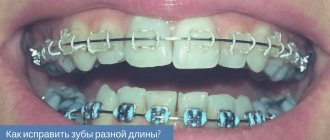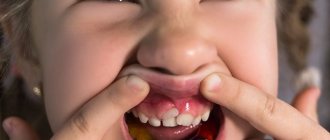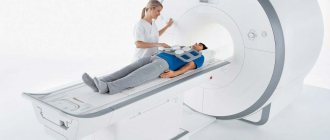Causes
Braces are considered a fragile structure, therefore, when using the product, the patient should follow certain rules and follow the recommendations of a specialist. This will maintain the integrity of the system throughout the entire treatment period.
The locks of the device are glued to a special adhesive. The adhesive has high strength values. It can withstand a certain pressure, but is destroyed when the force increases.
The power arc is deformed when the system is installed. She puts the main pressure on the locks, trying to return to their original state. With crowded teeth and some other malocclusions, uneven distribution of pressure occurs.
So, the fixation of the elements of an othodontic product can be impaired for several reasons. Among them:
- Consumption of inappropriate products. Doctors recommend excluding hard, tough and sticky foods from the diet.
- Inaccurate movements when performing hygienic procedures for caring for the oral cavity. You should use a toothbrush with soft bristles and use dental brushes carefully.
- Pathological arrangement of teeth. An acute lack of space creates significant pressure on the dentition. Conditions for element rejection arise even with the most minimal arc parameters.
The period of wearing braces ranges from one to three years. The duration of treatment depends on the age of the patient and the specific clinical case. The longer the correction, the higher the risk of structural failure.
Main element
It is the arches that perform the main function in straightening the teeth and correcting the bite.
Using their force, they pull the teeth to a position in which the arch takes on its original shape. Here Newton’s law comes into play, which states: “The actions of two material bodies on each other are equal in numerical magnitude and opposite in direction.” This means that the force of the arch is trying to move the teeth into one row.
And the teeth, in turn, resist the braces and try not to budge. But in this situation the arc wins. Thanks to its alloy, it eventually regains its original shape regardless of any deformation.
What to do if your braces come off?
In such a situation, you should report the incident to the doctor who installed the orthodontic product as soon as possible. He will schedule an unscheduled appointment.
It is of great importance where the fallen lock is located. If it was fixed on one of the front teeth, then before visiting a specialist, you can try to remove it. If the lock is located deep in the oral cavity, then it is better not to touch anything. Otherwise, there is a risk of damage to other structural elements.
For ligature systems, it is enough to remove the rubber band that secures the arch in the bracket. For non-ligated ones, you need to open the latch on the front surface of the lock. To do this, you can use tweezers or a regular toothpick. As a last resort, you can carefully cut it with small scissors.
There is an option to attach the element to the tooth surface using orthodontic wax. This is a temporary but justified measure. It will allow you not to remove the lock and relieve discomfort caused by its incorrect position.
You should not throw away a structure that has come loose. The orthodontist evaluates its condition and decides whether to reinstall it or replace it with a new element. The second option is preferable, since when the bracket comes off, it loses the properties that ensure reliable fastening. There is no guarantee that it will not come off again in the near future.
Indications for replacement
There are two reasons for replacing the arc:
- Planned adjustments during treatment;
- Damage to the power element.
In the first case, the procedure ensures the maintenance of directed traction, under the influence of which the problematic units continue to move into their natural anatomical position. In some brace designs, the wire tension is changed using a screw element, however, each arch has a limit threshold, which is not always enough to complete the correction cycle.
The second situation is caused by the occurrence of mechanical defects that exclude the possibility of further operation of the structure. Such cases are extremely rare - modern techniques involve the use of high-strength materials, the likelihood of breakage of which is minimal.
It is worth noting that when replacing a power arc as part of a planned cycle, both the upper and lower elements are updated, whereas in the event of a breakdown, only the damaged part is replaced.
The arc flew out
In most cases, thin arches fly out from the braces located on the last teeth. Orthodontists with extensive experience know how to prevent this from happening. Such arcs can only be placed up to “sixes”. Usually, they fly out of the tubes on "sevens". Another option to minimize the risk of the archwire flying out is to bend it behind the last bracket.
If such a nuisance does occur, then you need to place it in front of a mirror and tuck the arch into the tube on the last dental unit with tweezers. If you cannot cope with the problem on your own, then consult a doctor.
There are cases when the arc begins to bulge and scratch the oral cavity (cheeks, gums). It is useless to do anything on your own; here you need the help of a specialist. The components of the arc are cut, which only takes a couple of minutes.
Correction stages
The orthodontist determines the stages of treatment individually in each case, observing the dynamics of the process. But there are standard recommendations that the dentist relies on. In accordance with them, treatment is divided into three main stages:
- The first is to install highly elastic arches with a small cross-section. This is necessary in order to launch the initial mechanisms of teeth movement in the desired direction.
- The second is that corpus movement occurs, that is, the movement involves not only the crown part of the tooth, but also the root. For this purpose, thick arches with a large cross-section and increased rigidity are used. Usually they fill almost the entire space of the groove.
- The third is consolidation of the result. The middle section is used so that the speed of the process gradually slows down and returns to normal.
Broken bracket or archwire
If the integrity of the elements of the braces system is damaged, you should immediately go to the doctor.
Arc failure is a rare occurrence. As a rule, the reason is due to certain manipulations of the orthodontist. In any case, it must be replaced with a new one.
If a brace breaks, most often it also needs to be replaced. It should be noted that metal products rarely break. They are characterized by increased strength and last the entire period of correction. Plastic and ceramic systems are more susceptible to breakdowns.
How long do teeth hurt after getting braces?
The body responds to the shocking effects of an orthodontic arch with pain in the mouth, which usually subside within 10–15 days from the start of treatment. At the same time, it is usually difficult for patients to identify the source of discomfort: some complain of pain in the teeth, others in the jaw muscles or soft tissues.
If you continue to experience pain after this time, you should consult your doctor. Sometimes discomfort can be caused by excessive pressure on the teeth, which can be reduced by adjusting the system. But in most cases, pain is caused by injury to the mucous membrane from the protruding metal elements of the braces. This is one of the unpleasant surprises that can arise during the adaptation process.
What are the dangers of damaging braces?
Failures of the orthodontic structure lead to changes in the distribution of pressure on the dentition. If you do not consult a dentist in a timely manner, the teeth slowly begin to move to their original position.
If the bracket on the last tooth falls off, then there is a high risk that the lock may fall off the arch. It is easy to swallow, which means there is a risk of injuring the gastrointestinal mucosa.
The cost of orthodontic treatment is high, so you should carefully consider the doctor’s recommendations regarding the rules of wearing and caring for the braces system. This will minimize the likelihood of product breakdowns.
Menu during orthodontic treatment
After reading the list of restrictions above, you are no doubt wondering, “So what can braces bearers eat?” In fact, the list of dishes is very large, you just need to show a little imagination and follow the recommendations above. I will list only a small part of the recommended dishes so that you can get new ideas for culinary experiments during orthodontic treatment.
- Pasta, spaghetti, ravioli and so on. With cheese, various sauces and other additives there is a huge scope for creativity.
- Mashed potatoes or soft baked potatoes
- Many rice dishes with vegetables or seafood
- Various types of cutlets and dishes using minced meat
- Dumplings and dumplings
- All types of cereals
- Pies and similar baked goods (without a hard crust) with almost any variety of fillings, except nut
- Various seafood dishes (not hard)
- Various types of cheeses
- Dishes made from jelly or creams
- Smoothies and milkshakes
- Yogurts and cottage cheese with various additives
- Bananas, grapes, melons, watermelons, kiwis, strawberries and other soft fruits and berries
We suggest that you familiarize yourself with Amoxiclav for tooth flux in an adult | Dental Health
The above dishes are especially suitable for the beginning of treatment (especially in the first couple of weeks after bonding), when the teeth may become sore when biting on them. In the future, you can add more solid products from the second list (necessarily, cutting into small pieces).
Varieties
The choice of arch depends on many indications and factors, the most important of which are the model and the violation being corrected.
There are several types, classified by:
- materials;
- shape and rigidity.
By material type
The material depends on which model is chosen. Currently the following options are available for production:
- stainless steel - cheaper than others, very ductile;
- an alloy of nickel and titanium (nitinol) - quite soft and super elastic, with excellent memory of a given shape;
- an alloy of nickel and titanium with an admixture of copper - resistant to deformation, demonstrate a varied level of strength, difference in rigidity;
- an alloy of titanium and niobium.
On the left are stainless steel arcs, on the right are titanium-based alloys
. Those that do not contain nickel are suitable for people with allergic reactions. Some types exhibit thermal activity, that is, under the influence of critically high or low temperatures they are capable of changing their properties (expanding or contracting the structure). The orthodontist informs the patient about this so that during treatment there is no malfunction.
In shape and rigidity
These structural elements differ in the type of section. All dimensions are standardly indicated in thousandths of inches, since most manufacturers operate in countries with such a system. Basic properties depend on thickness and shape.
The following types are distinguished by form:
- round – cross-section 0.14, 0.16 or 0.18 – high elasticity and reduced rigidity;
- rectangular – cross-section from 0.14×0.25 to 0.21×0.25 – the most rigid;
- square – cross-section 16×16 or 175×175 – medium in rigidity.










